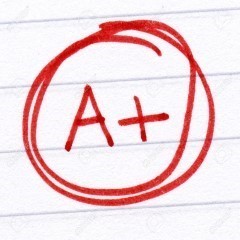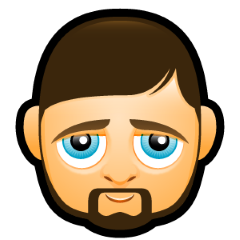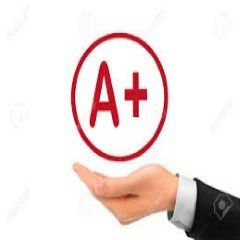Fin5080 Quiz 5
QUESTION 1
Suppose a stock had an initial price of $82.77 per share, paid a dividend of $4.5 per share during the year, and had an ending share price of $95.61. If you own 386 shares, what are the dollar returns?
QUESTION 2
Calculate the expected returns of your portfolio
QUESTION 3
Suppose a stock had an initial price of $96.93 per share, paid a dividend of $5.4 per share during the year, and had an ending share price of $86.76. What are the dollar returns?
QUESTION 4
Suppose the returns for Stock A for last six years was 4%, 7%, 8%, -2%, 9%, and 7%.
Compute the standard deviation of the returns.
QUESTION 5
Suppose a stock had an initial price of $70.2 per share, paid a dividend of $7.6 per share during the year, and had an ending share price of $109.5. What are the percentage returns?
QUESTION 6
You have observed the following returns on ABC's stocks over the last five years: 3.3%, 9.4%, 12.3%, 13.6%, 2.3% What is the geometric average returns on the stock over this five-year period.
QUESTION 7
Calculate the expected returns of your portfolio
QUESTION 8
Suppose a stock had an initial price of $97.93 per share, paid a dividend of $9.9 per share during the year, and had an ending share price of $106.26. What are the percentage returns?
QUESTION 9
Suppose a stock had an initial price of $74.52 per share, paid a dividend of $8.9 per share during the year, and had an ending share price of $105.78. What are the percentage returns if you own 25 shares?
QUESTION 10
You have observed the following returns on ABC's stocks over the last five years: 3%, 9%, -7.2%, 11.4%, -7.2%. What is the arithmetic average returns on the stock over this five-year period.
QUESTION 11
A portfolio is invested 26.6% in Stock A, 25% in Stock B, and the remainder in Stock C. The expected returns are 19%, 38.5%, and 22.3% respectively. What is the portfolio's expected returns?
QUESTION 12
You own a portfolio invested 27.37% in Stock A, 18.23% in Stock B, 29.75% in Stock C, and the remainder in Stock D. The beta of these four stocks are 0.8, 0.82, 0.37, and 1.17. What is the portfolio beta?
QUESTION 13
You have observed the following returns on ABC's stocks over the last five years: 4.2%, 8.4%, 9.3%, 10.5%, 6.7% What is the arithmetic average returns on the stock over this five-year period.
QUESTION 14
You own a portfolio invested 18.15% in Stock A, 17.77% in Stock B, 19.07% in Stock C, and the remainder in Stock D. The beta of these four stocks are 0.33, 1.25, 0.63, and 1.18. What is the portfolio beta?
QUESTION 15
You have observed the following returns on ABC's stocks over the last five years: 2.4%, 8%, -3.1%, 11.8%, -2.7% What is the geometric average returns on the stock over this five-year period.
QUESTION 16
Based on the following information, calculate the expected returns:
Prob Return
Recession 30% 43.5%
Boom 70% 20.1%
QUESTION 17
Portfolio diversification eliminates which one of the following?
QUESTION 18
Standard deviation measures _____ risk while beta measures _____ risk.
QUESTION 19
The systematic risk is same as:
QUESTION 20
You own a portfolio that has $1,900 invested in Stock A and $2,700 invested in Stock B. If the expected returns on these stocks are 9 percent and 15 percent, respectively, what is the expected return on the portfolio?
QUESTION 21
What is the beta of the following portfolio?
QUESTION 22
The stock of Billingsley United has a beta of 0.92. The market risk premium is 8.4 percent and the risk-free rate is 3.2 percent. What is the expected return on this stock?
QUESTION 23
What is the beta of the following portfolio?
QUESTION 24
You own a portfolio of two stocks, A and B. Stock A is valued at $6,540 and has an expected return of 11.2 percent. Stock B has an expected return of 8.1 percent. What is the expected return on the portfolio if the portfolio value is $9,500?
QUESTION 25
A $36,000 portfolio is invested in a risk-free security and two stocks. The beta of stock A is 1.29 while the beta of stock B is 0.90. One-half of the portfolio is invested in the risk-free security. How much is invested in stock A if the beta of the portfolio is 0.58?
QUESTION 26
Suppose the nominal rate is 14.17% and the inflation rate is 5.04%. Solve for the real rate. Use the Fisher Effect formula.
Fin5080 - Quiz 5
This solution provides assistance in regard...





Tutorhelp08
Senior JournalistSell Your Solution Report Solution Support Center
Online Users
-
 Tutorhelp08
Today
Tutorhelp08
Today




A+ - Thank you!
Thanks for the positive feedback!